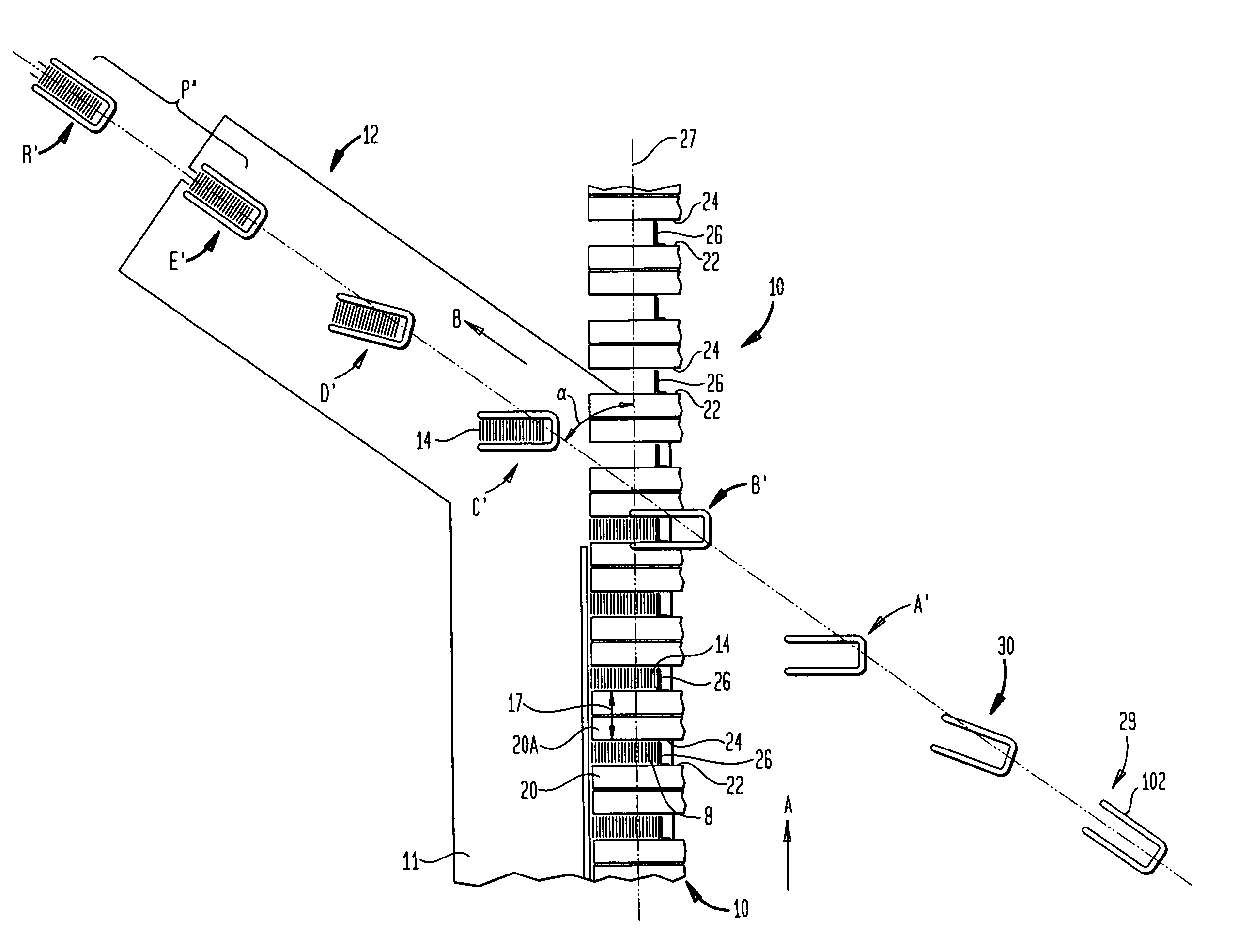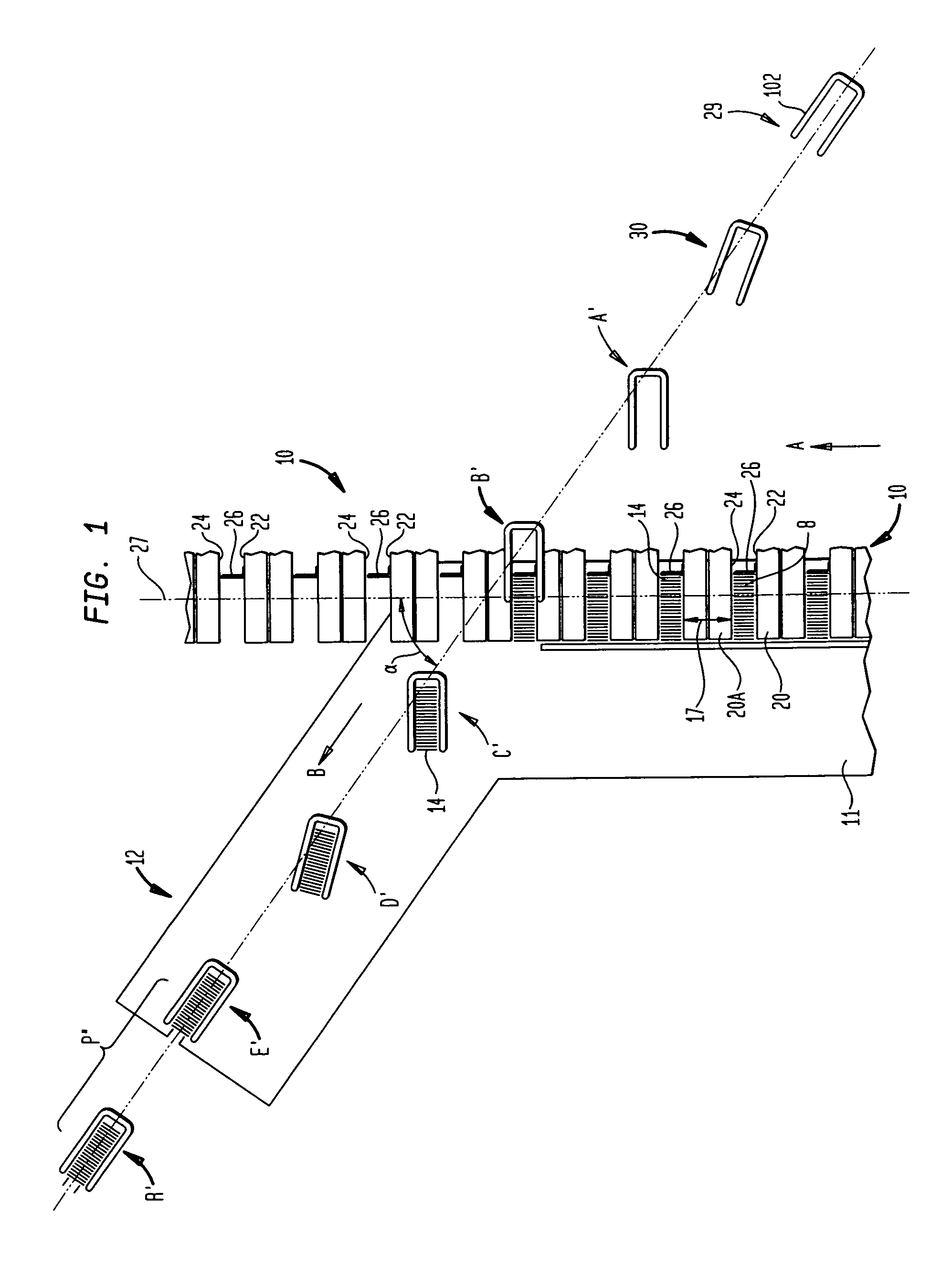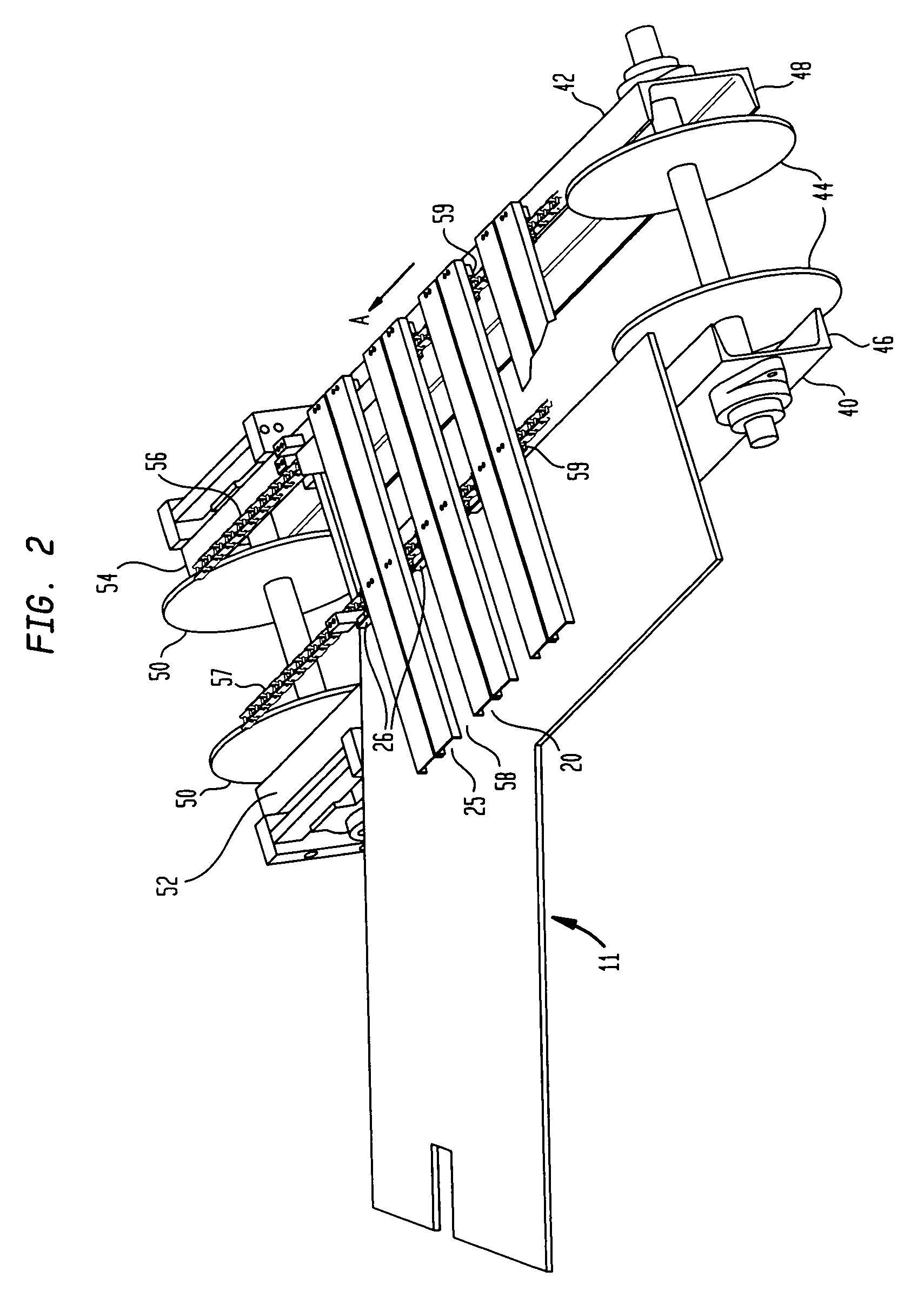Continuous motion product transfer system with conveyors
a product transfer system and continuous motion technology, applied in the direction of mechanical conveyors, conveyor parts, packaging foodstuffs, etc., can solve the problems of cracker damage, physical limitations of the reciprocating mechanism, and especially troublesome food industry, and achieve the effect of high speed and higher speed
- Summary
- Abstract
- Description
- Claims
- Application Information
AI Technical Summary
Benefits of technology
Problems solved by technology
Method used
Image
Examples
Embodiment Construction
[0039]For the purposes of providing and understanding the principles of the present invention, reference will now be made to the embodiment illustrated in the drawings and specification language used to describe the same. Nevertheless, by those skilled in the art, it will be understood that no limitation of the scope of the present invention is thereby intended, and further changes in the illustrated device may be made without deviating from the scope of the present invention.
[0040]As shown in FIG. 1, the present invention is designed to transfer product, for instance slugs 14, moving in an X-direction, as indicated by arrow A, along a first conveyor 10 to a cross conveyor 12 moving in a θ-direction indicated by arrow B. The θ-direction consists of an X-coordinate and a Y-coordinate. Although the present invention may be adapted for numerous different products, one preferred embodiment of the present invention relates to transferring baked goods specifically crackers and cookies, kn...
PUM
 Login to View More
Login to View More Abstract
Description
Claims
Application Information
 Login to View More
Login to View More - R&D
- Intellectual Property
- Life Sciences
- Materials
- Tech Scout
- Unparalleled Data Quality
- Higher Quality Content
- 60% Fewer Hallucinations
Browse by: Latest US Patents, China's latest patents, Technical Efficacy Thesaurus, Application Domain, Technology Topic, Popular Technical Reports.
© 2025 PatSnap. All rights reserved.Legal|Privacy policy|Modern Slavery Act Transparency Statement|Sitemap|About US| Contact US: help@patsnap.com



